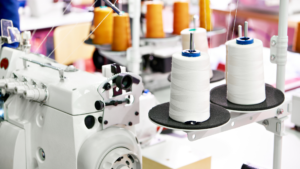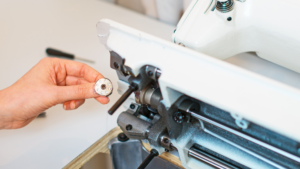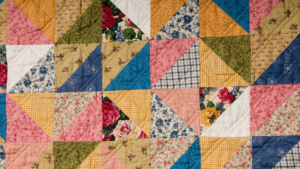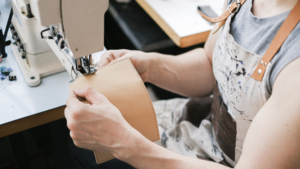Last Updated on September 23, 2021
Sewing is sometimes full of difficulties. When you sew, you want to enjoy some quiet time, concentrate on your project, and relax. However, obstacles such as bobbin case problems will arise, disrupt your goals, and cause significant delays in your stitching time.
Among the most common issues with the bobbin casing is wrong bobbin insertion. Another issue is dirt or lint accumulation. Lint and thread have a habit of accumulating in your bobbin case and wreaking havoc.
Continue reading to discover more about the various sewing machine bobbin case issues and how to resolve them.
The information you’ll acquire from this article should save you some time and help you avoid frustration.
What is a Bobbin Case?
Before we proceed with the possible sewing machine bobbin case problems, you must first understand the bobbin case itself. So what is a bobbin case, and how does it work?
A bobbin case is the portion of the machine that keeps your bobbin in place when you’re sewing, as the name suggests. “Removable” and “inset” bobbin cases are the two types of bobbin casings.
When used with the suitable bobbin, a bobbin case will keep the bobbin snugly in place. It will allow the machine to unravel it cleanly. Like the tension component for the top thread, the bobbin case applies tension to the bottom thread.
As the user, you should never have to adjust the bobbin case tension. This is why it’s crucial to thread the bobbin correctly. There should be resistance on the bottom thread as you draw it up. Re-thread the bobbin through the bobbin case if there isn’t one.
Because the top thread will cross the top of the bobbin box, it’s critical to use the correct bobbin. The thread will catch and seize the machine if the bobbin is too tall.
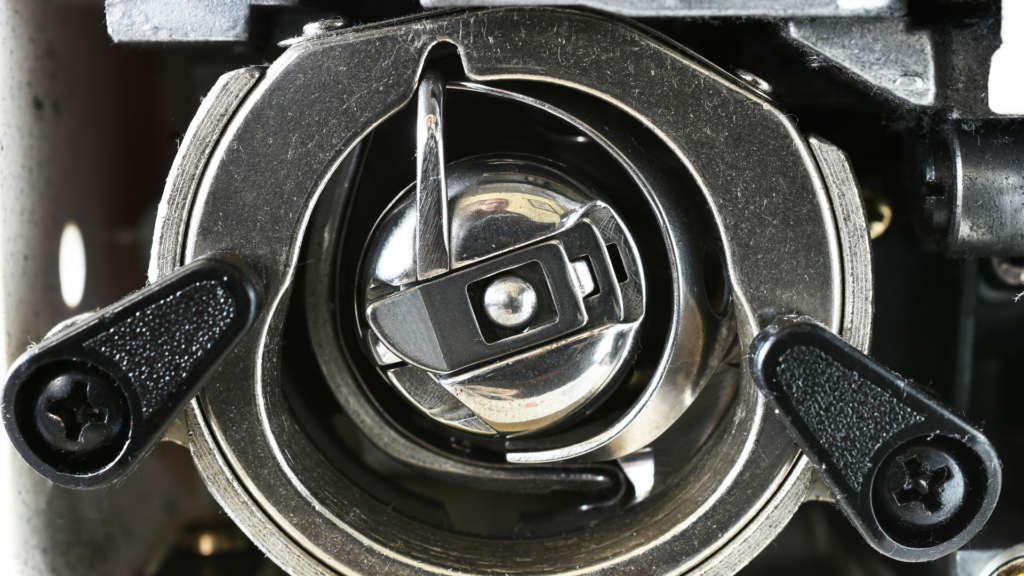
Singer Sewing Machine Bobbin Case Problems
A bobbin case may have multiple problems. Most Singer sewing machine bobbin troubles, on the other hand, can be resolved by consulting the owner’s manual.
1. Inserting The Wrong Bobbin
You may not have appropriately inserted the bobbin inside. Bobbins usually do not get a good introduction in the same way on all sewing machines. Singer, for example, offers both clockwise and counterclockwise positioning.
2. Dirt In The Bobbin Case
Another issue is that the bobbin case is filthy. Lint and thread have a habit of accumulating in your bobbin case and wreaking havoc. The first step is to clean the bobbin casing properly, which you should do regularly after that.
3. Bobbin Case Not Turning
This challenge comes from a few different places. The tension on your bobbin thread may be too tight. Your bobbin might not turn if this happens. All you should do is change your sewing machine tension and double-check that the bobbin is turning again.
Another reason could be that your bobbin thread is wound up under uneven tension. You’ll need a new bobbin to fix this problem, as well as the patience to wind the thread gently and evenly.
Then, after replacing the old bobbin with the new one, restart sewing. Double-check the tension. You don’t want to return to this problem right after you’ve solved it.
4. Bobbin Case Stuck In Sewing Machine
If you have a Singer sewing machine, this could be a challenging problem to overcome. Tiny particles of lint to a thread can get lodged deep inside the bobbin case or bobbin. It will cause the bobbin to become stuck.
Get a flashlight and light it into the depths of the bobbin case to see if you can identify any lint or other debris. If this is the case, use tweezers to remove the lint. If this doesn’t work or you can’t see the lint, you’ll need to hire a professional maintenance specialist.
Remove the needle plate cover, then loosen the two screws within the needle plate with the disk-shaped screwdriver. Remove the bobbin and the bobbin case.
Finally, replace your bobbin by aligning the bobbin’s marks to the machine’s marks. If the problem persists, have it repaired by a professional maintenance specialist.
5. Loose Bobbin Case
This problem is known to occur with the Touch and Sew model of the sewing machine. The best recommendation is to have it mended by a professional, as it may not be possible to fix it yourself.
If it’s still under warranty, you may wish to get your money back or sell it to someone else. It is a formidable machine to repair when this problem happens.
It’s also possible that an ancient cause is the source of the issue. If your bobbin case makes a clicking or other similar noise, you may need to clean it. When your equipment is under warranty, one thing you should avoid doing is touching the screw inside.
That screw is factory set, and if you turn it in the wrong direction, etc., you could void your warranty. Another option is to take the equipment to a maintenance specialist. Watch them fix it so you can do it yourself after the warranty expires.
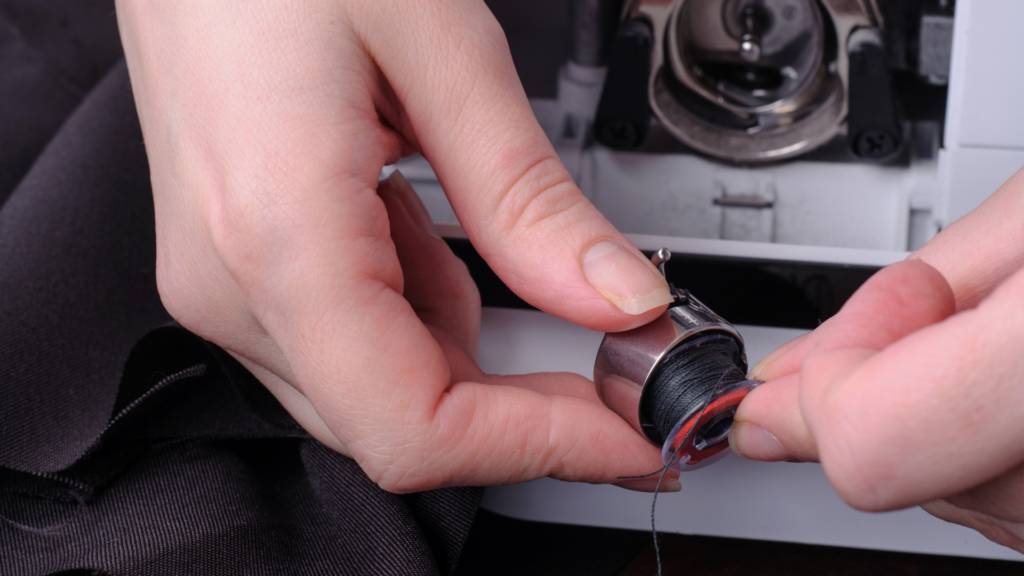
Bobbin Case Care And Maintenance
Remove lint build-up from your bobbin casing regularly to ensure that it lasts as long as feasible. Make that the bobbin casing, as well as the plastic and metal, are all oiled. The hook where the hook hits the metal on the metal front loading bobbin casings should always have lubrication.
It’s important to remember that you only need a drop of oil. Turn your hand wheel to distribute the sewing machine oil evenly.
If you use your equipment daily, safeguard your investment by being entirely serviced by a professional every six months. Otherwise, once a year should suffice.
You will see a small screw—this screw is responsible for adjusting the tension of your bobbin thread. In most cases, the factory-set tension is sufficient for most sewing, and you won’t need to adjust it. You’ll probably need to change the bobbin tension if you’re using a hefty thread.
You should slightly loosen the screw for a thick thread. You should slightly tighten the screw for a thin thread. Only make minor adjustments to this screw – a quarter of a turn is a lot. If the factory setting isn’t producing a balanced stitch, you only need to be concerned with bobbin tension.
Your bobbin case will last as long as you take excellent care of it. However, it will eventually stop sewing smoothly and you may need to replace it.
Some individuals believe that particular pieces of the bobbin case, such as the tension spring or the tension screw, need replacement. Because the rest of the bobbin casing is already worn, this is more effort than worth.
Metal bobbin cases are the same way. It’s not enough to replace the tension screw or the metal plate. Purchase a brand new case for yourself. They’re also incredibly affordable.
The spinning of your bobbin grinds down the case’s interior over time, causing it to fit poorly. Furthermore, the bobbin case cutout will wear down, allowing it to travel back and forth inside the assembly sloppily. If you replace your bobbin case when it shows signs of wear and tear, you’ll have a better stitching experience.
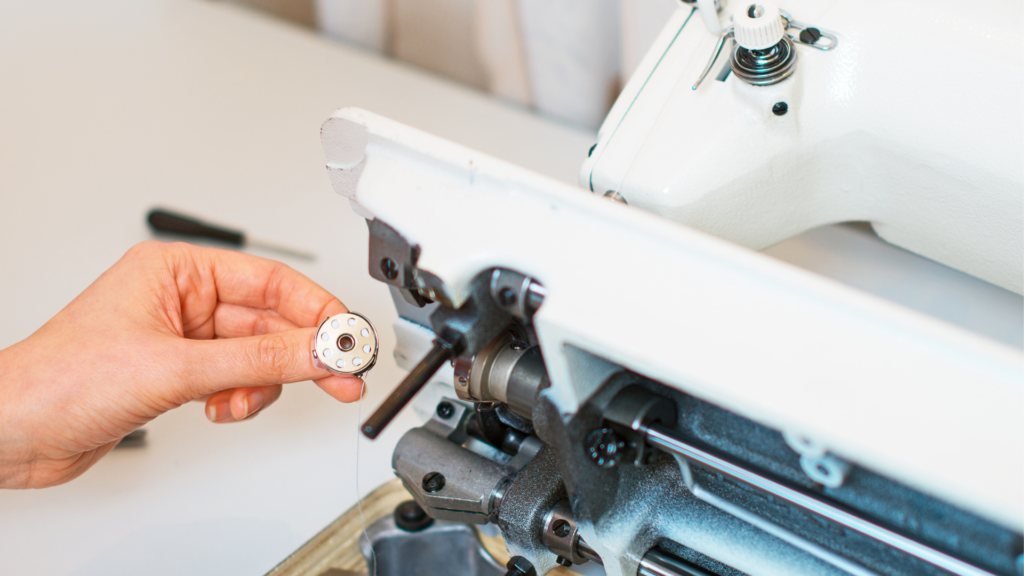
Frequently Asked Questions
1. Can you sew without a bobbin case?
No, sewing without a bobbin case is impossible. A bobbin case for a sewing machine is a necessary component for sewing. It keeps track of the thread, so you don’t have to stop and rewind it manually. The thread travels through the needle before exiting a bobbin case coil.
2. Is the bobbin case supposed to move?
The bobbin case should never move. If it’s moving, there’s a chance there’s another issue with the sewing machine that needs attention before you can get it running again.
3. Why is my bobbin case moving?
If you’re using a machine with a horizontal bobbin, this can cause your bobbin casing to slide. The bobbin is placed on the side of the machine, making it easier for it to fall out. You can fix it in place with safety pins or hair clips while restoring the tension to its original setting.
Another possibility is that a thread has been entangled in the bobbin case itself. Look down through the small hole at the top. If the screws aren’t correctly aligned, twist them so they don’t get trapped when winding yarn through them.
4. Can you get a bobbin case off?
Yes, you can. You should be able to see the bobbin casing if you use your fingers to pop the small hole at the top. Look on either side of it for two tiny holes. These holes should vertically line up with one another if it’s threaded through with a thread on each side.
To unscrew them, you’ll need tweezers. Before re-inserting, make sure you spin another bobbin with a new piece of thread because there could be something stuck within.
5. Why does my bobbin case keep popping out?
The most typical cause of a bobbin casing popping out is a bobbin that did not receive the proper threading. It could also be misaligned with the thread route, and it got tangled up. This occasionally happens if you recall the last time you tried to rewind your bobbin.
There is a second hole on either side of the bobbin case to aid alignment. But it may still be misaligned if the tension is too tight or loose.
6. When should I replace my bobbin case?
When your bobbin case starts popping out of the machine, it’s time to replace it. Another sign is if you observe any thread bunching up. Lastly, if it appears like the thread is getting stuck in a bobbin case hole.
Some Final Words
Sewing can be enjoyable and thrilling, but it can also be frustrating if you are encountering bobbin issues. For this reason, we have tackled the most frequent sewing machine bobbin case issues and how to fix them in this post.
When you’re experiencing any of these problems, this guide should help you.
Happy sewing!


